The first five steps of a run build on each other. My first step when I leave the box is to get in my lane. That’s the width I want to keep between the steer and my horse: not too wide and not behind him. No matter where that steer goes, I’m staying in my lane. My second step is the position that I get, how close I want to be behind the steer. My third step would be swing. I want to get my swing under his right horn and broke over the left. My delivery—the fourth step—is a continuation of my swing. If my hand is underneath the right horn and turned over at the left, my delivery is the same. My fifth step is my slack. When I pull it, I keep my coils on my hand, I let my right hand run down the rope and my left hand angles off to the left at a 45-degree angle. Here are the next five steps to completing the run.
1. The main thing to handling steers is to get their heads. If you can keep their heads, that’s when the feet come together and the heeler generally knows where that next hop is going. You’ve got to get that angle first—and that starts with moving your left hand to that 45-degree angle when you pull your slack to establish the angle. After I get my slack, I begin to create that angle.
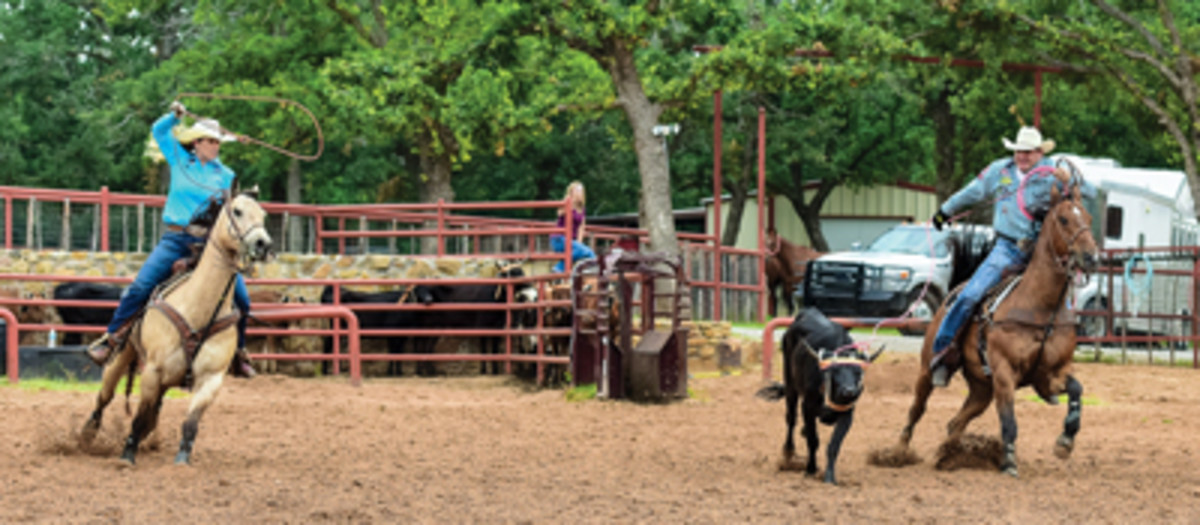
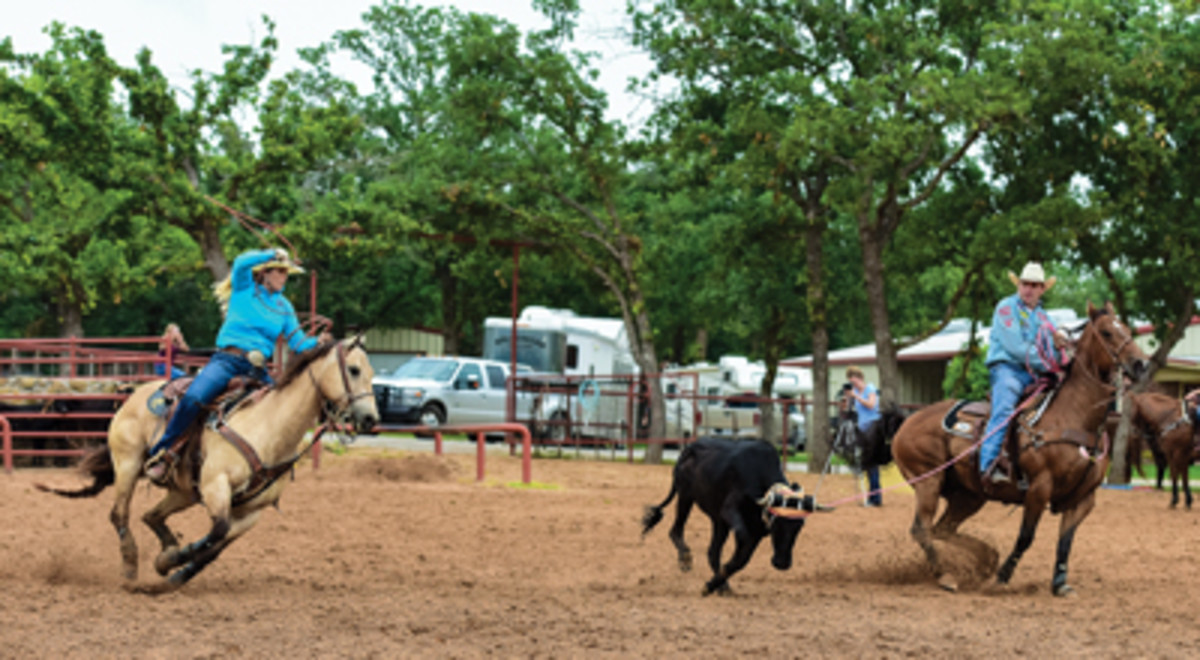
2. As you can see here, this is when the rope starts to get tight and I’m at the angle I want to be. It’s at this point that I start slowing my horse down. This is when the rope is tight and I’m able to start bringing that steer’s head in my direction. You can see where my heeler is, and she’s able to keep riding. She’s in a forward position—that’s the position you want your heeler to be in—and she can tell where that next hop is going. Anytime you see a heeler in defense, the steer’s head has come up or the steer is in the corner and has stopped. That’s the last place you want your heeler to be because their tip is too high, their swing slows down and their horse’s feet slow down. That’s all because they don’t know where the steer is going.
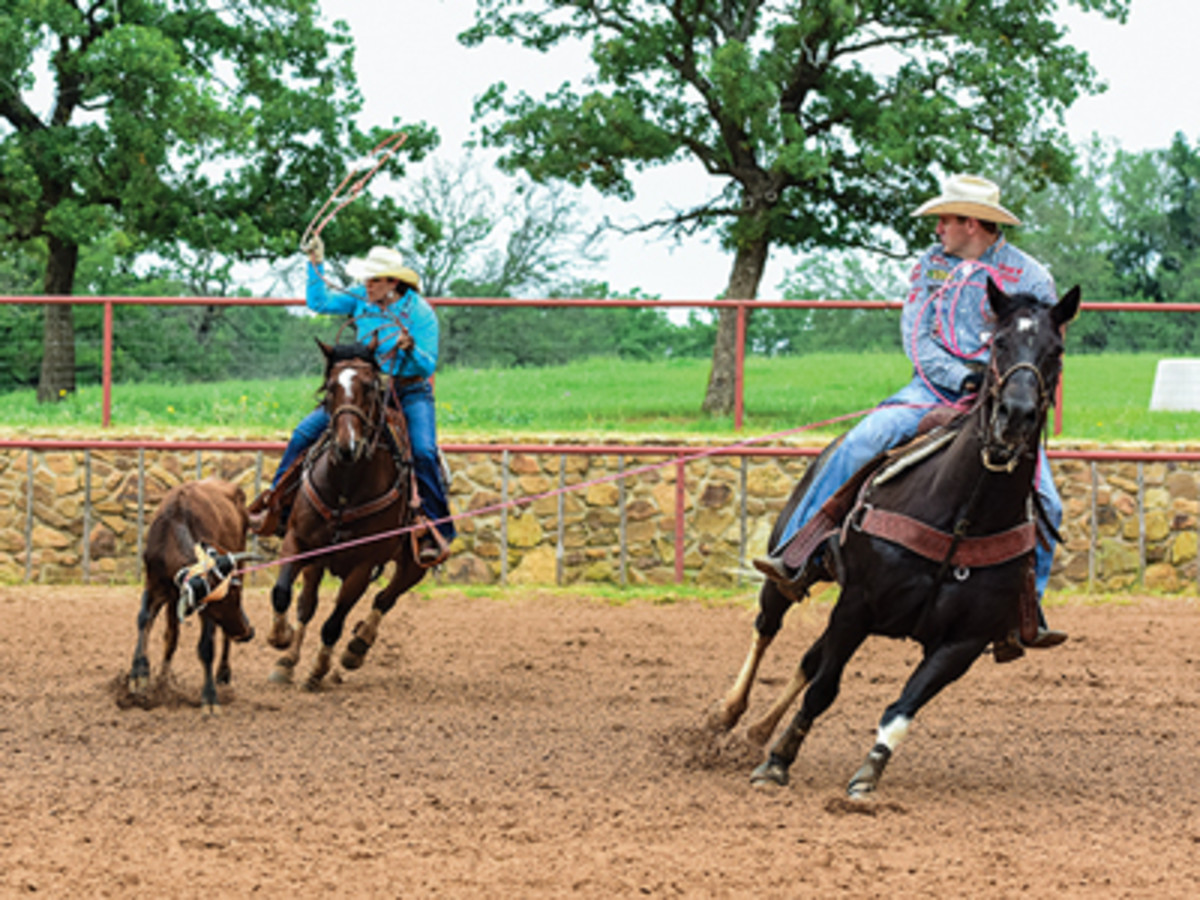
3. Here, the steer is getting pulled across the arena. This is the first hop. The steer is square, and my heeler is square and down in a forward position. You can see that I have the steer’s head so the heeler knows where that next hop is going—she’s forward and down over the back of the steer. The heeler also has a place she can ride to and swing over the steer’s back. The steer’s feet are close together, and you can see where I’m starting to bring him back toward the front of the arena.
4. Here is a good example of where I want my heeler to be. She’s able to stay down, I still have the steer’s head and she has a place to throw her loop. When I have the steer’s head coming back to me, you can see how close the steer’s feet are together. When a steer is coming back like this, it brings their feet closer to the heeler, too. If I’m just going straight, they have to throw all the way around the feet. Bringing him back brings the feet closer and helps to eliminate roping and slipping legs.
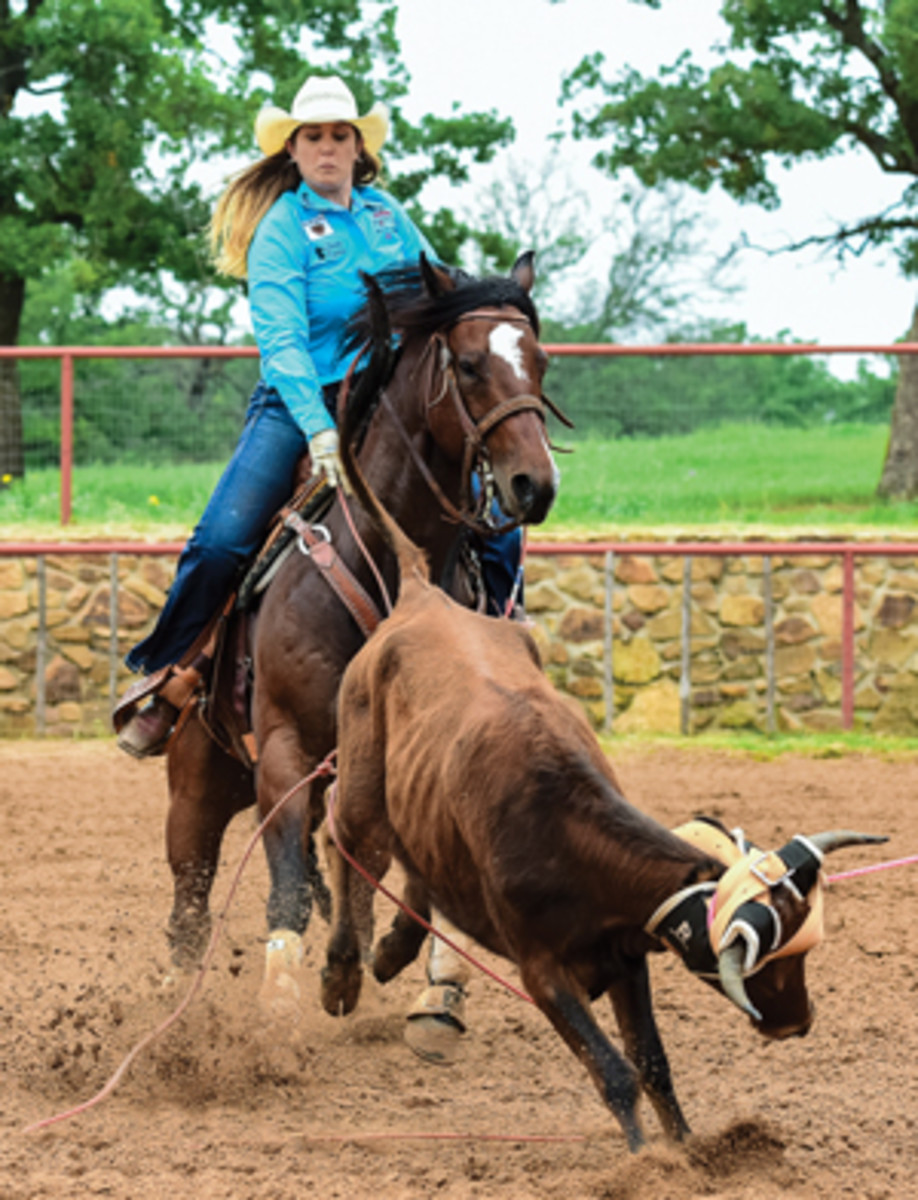
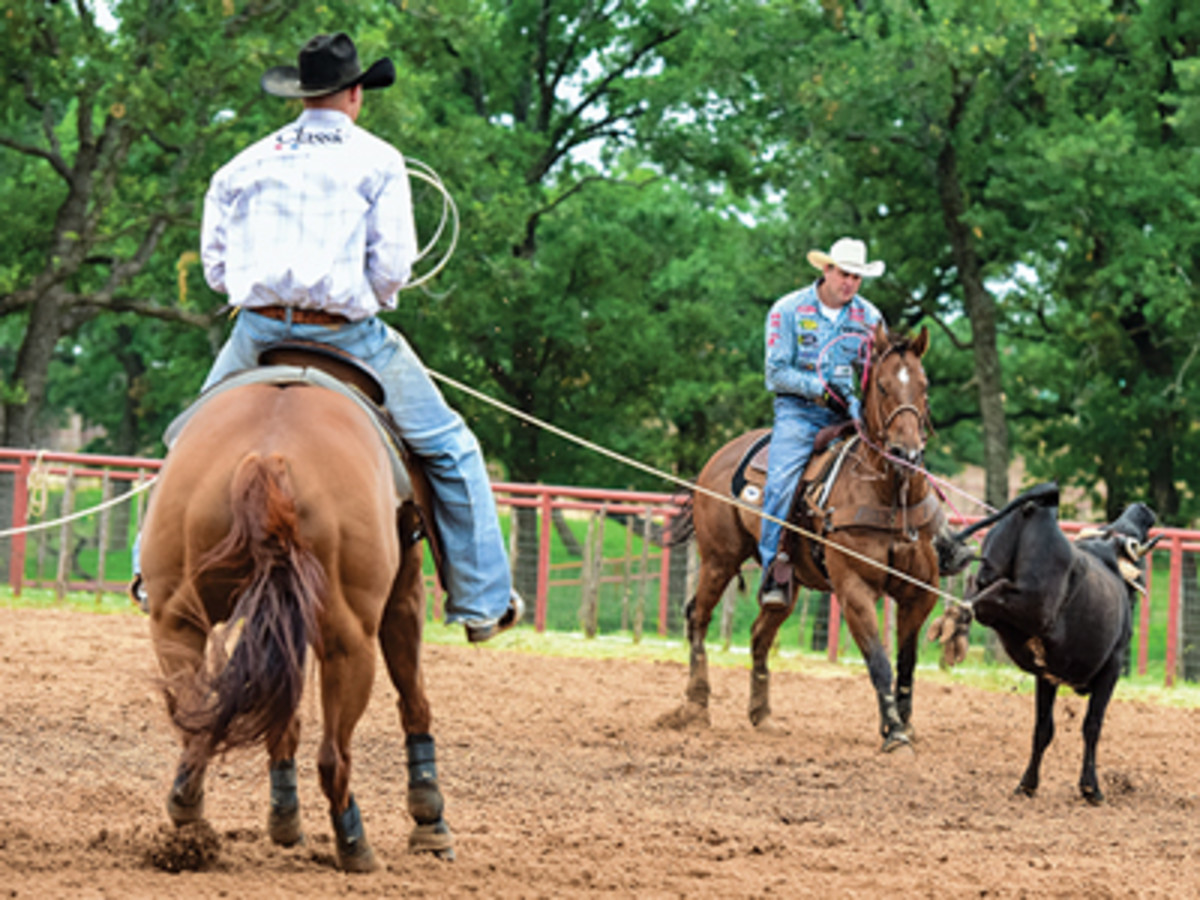
5. This is a different run, but taken at the same moment in the run from a different angle. This is a good example of going “back” toward the front of the arena where I came from. I’m not going straight across the pen. I have the steer’s head and I’m coming back, that’s what brings his feet closer together. The heeler is in a position where he knows where that hop is. When you pull a steer straight across the pen, his shoulders stay straight and he’s able to keep a wide stance with his hind feet underneath himself. But if you pull his head to the left, you break the steer over the top of himself a bit and that forces that left leg closer to the right one. And, this brings the steer closer to your heeler.








